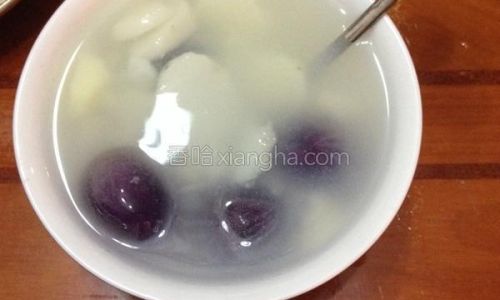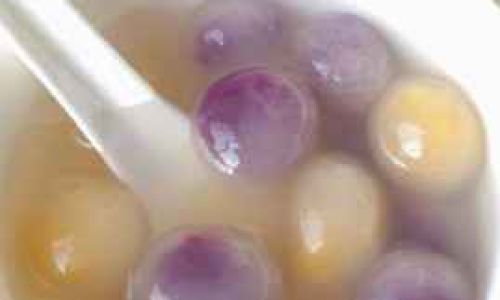Introduction
Colorful crystal dumplings, also known as “crystal jade dumplings” or “rainbow tangyuan,” are a visually stunning and delicious twist on the traditional Chinese dessert. These translucent, chewy treats are filled with sweet or savory fillings and boast a rainbow of hues, making them a feast for both the eyes and the palate. While store-bought versions are convenient, crafting them at home allows for endless creativity in flavor combinations, colors, and shapes. This article will guide you through the process of making these delicate dumplings from scratch, ensuring a rewarding culinary experience that impresses guests and delights family members alike.
Ingredients and Tools
Before diving into the recipe, gather the following ingredients and tools to streamline the process:
For the Dough:

- 1 cup (140g) tapioca starch (also known as tapioca flour)
- ½ cup (70g) potato starch (or cornstarch as a substitute)
- 1 cup (240ml) boiling water
- 1 tbsp vegetable oil (such as sunflower or canola oil)
- Food coloring (gel or liquid, in your preferred colors)
For the Fillings (Sweet Options):
- Sweet red bean paste (store-bought or homemade)
- Black sesame paste mixed with honey or sugar
- Crushed peanuts combined with brown sugar and butter
- Mango or strawberry puree (for a fruity twist)
For the Fillings (Savory Options):
- Minced pork mixed with soy sauce, ginger, and garlic
- Shredded chicken with mushrooms and oyster sauce
- Vegetarian options like spinach and cheese or tofu with coriander
Tools:
- Steamer basket or bamboo steamer
- Mixing bowls
- Rolling pin or a clean, flat surface for kneading
- Small cookie cutters (optional, for shaping)
- Parchment paper or cabbage leaves (to prevent sticking)
- Plastic wrap (to keep dough moist)
Step-by-Step Instructions
Preparing the Dough
The secret to the dumplings’ signature chewy texture lies in the combination of tapioca and potato starches, which create a glossy, translucent skin when cooked. Begin by sifting the tapioca starch and potato starch into a heatproof mixing bowl to eliminate lumps.
Slowly pour the boiling water into the dry ingredients while stirring vigorously with a spatula or wooden spoon. The mixture will initially appear clumpy and uneven. Continue mixing until the dough comes together, then add the vegetable oil. Knead the dough by hand for 5–7 minutes until it becomes smooth, elastic, and slightly sticky. If the dough feels too dry, sprinkle 1–2 teaspoons of water; if too wet, add a pinch of tapioca starch.
Coloring the Dough
Divide the dough into portions based on the number of colors you wish to use (e.g., four portions for four hues). For vibrant shades, use gel food coloring, as liquid dyes may dilute the dough’s consistency. Wear gloves to avoid staining your hands.
Take one portion of dough and flatten it into a disc. Add a drop of food coloring to the center, then fold the dough over itself and knead until the color is evenly distributed. Repeat with remaining portions. For natural colorings, substitute beet juice (pink), spinach puree (green), or turmeric (yellow) for artificial dyes.
Shaping the Dumplings
Roll each colored dough portion into a log, then slice it into 1-inch (2.5cm) pieces. Cover unused dough with plastic wrap to prevent drying.
Take one piece and flatten it into a 3-inch (7.5cm) circle using your fingertips or a small rolling pin. The edges should be thinner than the center to ensure even cooking. Spoon 1–2 teaspoons of filling into the center.

Sealing the Dumplings
Gently pinch the edges of the dough together to seal the filling inside, creating a half-moon shape. For a rounded appearance, twist the sealed edges into a small pleat. Alternatively, use a cookie cutter to create flower or star shapes (ensure the filling is fully enclosed). Place finished dumplings on a parchment-lined tray, spaced apart to prevent sticking.
Steaming the Dumplings
Fill a steamer basket with boiling water and bring it to a rolling simmer. Lightly grease the basket or line it with cabbage leaves to prevent sticking. Arrange the dumplings in a single layer, leaving 1 inch (2.5cm) between each to allow for expansion.
Cover the steamer and cook for 8–10 minutes. The dumplings are ready when they turn translucent and the dough feels springy to the touch. Avoid overcooking, as this can cause the skin to become gummy.
Serving and Presentation
Transfer the dumplings to a serving plate and brush them lightly with coconut oil or sesame oil to enhance their shine. Garnish with toasted sesame seeds, shredded coconut, or edible flower petals for an elegant touch.
Colorful crystal dumplings pair beautifully with a variety of accompaniments. Serve them warm with a drizzle of osmanthus syrup, a sprinkle of crushed pistachios, or a side of green tea for balance. For a modern twist, arrange them on skewers and serve as bite-sized appetizers at parties.
Tips for Success
- Dough Consistency: If the dough cracks while rolling, it may be too dry. Knead in ½ teaspoon of water at a time until pliable.
- Freezing: Uncooked dumplings can be frozen on a tray, then transferred to a freezer bag. Steam directly from frozen, adding 2–3 minutes to the cooking time.
- Color Variation: For marbled effects, gently swirl two colored doughs together before cutting into pieces.
- Filling Options: Experiment with textures—combine smooth pastes with crunchy nuts or chewy dried fruits for contrast.
Health Benefits and Dietary Adaptations
Tapioca starch is gluten-free, making these dumplings suitable for those with gluten sensitivities. Potato starch adds a neutral flavor and aids in binding. For a lower-calorie option, use fruit purees or steamed vegetables as fillings. Natural colorings like beet juice or spinach also provide vitamins and antioxidants. However, due to the starch content, consume in moderation if monitoring carbohydrate intake.
Creative Variations
- Dessert Dumplings: Fill with Nutella, salted caramel, or mashed sweet potato.
- Savory Twists: Incorporate cheese, bacon bits, or spicy kimchi into the filling.
- Themed Designs: Use cookie cutters to shape dumplings into hearts, stars, or animals for festive occasions.
Conclusion
Crafting colorful crystal dumplings at home is a delightful blend of artistry and culinary skill. Whether you’re celebrating a holiday, hosting a dinner party, or simply indulging a sweet tooth, these vibrant treats offer endless possibilities for customization. By mastering the dough’s texture, experimenting with fillings, and embracing creative presentation, you’ll elevate this humble dessert into a showstopping centerpiece. So gather your ingredients, unleash your imagination, and savor the joy of homemade crystal dumplings—one chewy, colorful bite at a time.






0 comments